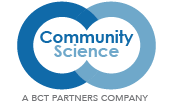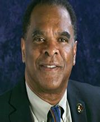NE: In order to set the stage for our readers, can you tell us a little about yourself and how you came to be involved in the evaluation profession? What insights or experiences led you to become involved in the way that you did?
RM: That’s sort of a long contextual story. I think it begins with the conditions of my early childhood. I was born in Panama, and my grandparents came from the West Indies to work on the construction of the Panama Canal. Ironically, most West Indian canal laborers faced barriers finding work on the Canal Zone following its completion. Many of them returned to the Caribbean or to the cane fields in Cuba to find work. Not without difficulty, others integrated into the Panamanian labor force when they were able to overcome language barriers and overt racism of the Panamanian society. My father was born in Panama and was among the second generation of West Indian immigrants to the Isthmus. He was fortunate to get a job on the Canal Zone as an oiler on one of the tugboats deployed for the seemingly constant effort of dredging the canal pathway. Being a “local worker” (meaning a Panamanian employee as opposed to “U.S. workers” who were predominantly American Caucasians) on the Dredging Division maintenance crew allowed my dad to request—and he was ultimately approved—for family residential quarters in Gamboa, Canal Zone, where the Dredging Division maintenance crew was housed.
Allow me to pause here and provide further historical context for the reader. The Panama Canal Zone constituted a politically separate military, residential, and governmental presence along the fifty miles of borders on the canal. It essentially created a separate country in the middle of the Republic of Panama. It is not an exaggeration to describe the Canal Zone government as very militarily regimented, and it was segregated by nationality, military affiliation, and, not too subtly, by race. The Canal territory administrators were comprised of Caucasian U.S. employees. The maintenance crew at the lower job-skill levels was comprised primarily of Panamanians of West Indian descent. The military personnel (Army, Navy, and Air Force) were, in the majority, Caucasian. The Canal Zone residential townships were highly racially segregated, as was the payroll system. Caucasian Americans lived in Gold-designated communities and local workers (predominantly Panamanians of West Indian descent) in Silver- designated residential communities. Wages for Canal Zone workers were determined similarly. Caucasian Canal Zone employees were paid on the basis of the Gold payroll rate system, and the local workers’ (predominantly Panamanians of West Indian descent) pay scale was based on the Silver wage scale rates. This system of pay scale was a carryover from the Canal construction period (1904–1914) when Americans/Caucasians were paid in Gold certificates and West Indian (and other non-U.S. workers) were paid with Silver certificates.
In general, the Canal Zone government historically embraced and adopted a highly racial context that segregated workers by race. In the Canal Zone territory following the failed French attempt, salary, wages, privileges, and opportunities around construction were determined very consciously and legally by race.
So I grew up as a child pretty much in this overtly racially segregated environment. The irony of it all is that as bad as racial segregation was in the Canal Zone, it was relatively better than living in the Republic of Panama where job opportunities and pay scales were not as generous and neither was racial integration, tolerance, and acceptance of Blacks as integral citizens of the country (this could be a longer discussion). For Panamanians of West Indian descent, indeed for Panamanians of African descent, in general, being Black meant being marginalized.
The biographical context I am attempting to outline is that my evaluation practice orientation has been fundamentally informed by a lived history of people legally segregated by race. That kind of environment really stuck with me. That kind of politics stuck with me. That kind of legal segregation of people and races stuck with me.
In 1964, I had the extraordinary fortune to win an international scholarship to Brandeis University. As you know, this was a heightened period of the civil rights struggle. It was a period of time when Black students, in particular, were being challenged to “be a part of the problem or the solution.” I became very active in the student body. We made a lot of demands for a Black studies department and for Black faculty, and we addressed a lot of the things that we thought Brandeis could be doing better. I got another scholarship to Brandeis’s Florence Heller School, which, at the time and still is today, a preeminent school of social policy analysis and research. I still carried with me an ardent fervor of trying to make my educational exposure and skills part of the solution to the social and economic inequities fueled by racist beliefs, practices, and behaviors. I decided early on to frame my graduate school curriculum to acquiring skills and competencies to position me as part of the solution so as to better understand and help solve enduring social and economic inequities driven by racism. I became very interested in social policy analysis and program evaluation. I became particularly interested in shaping the methodology of these practices in ways that might better capture data in the voices of people for whom programs were being designed, and to shape program interventions accordingly. Indeed, being part of the solution meant applying my graduate student work by contributing to the application of social policy tools that were more “objective and empirical” in capturing the experiences of marginalized communities and more compelling in informing policy and program solutions. This objective framed my orientation to research and evaluation, and it continues today. There was a great deal of resistance in the 60s and early 70s about the kind of participatory methodologies that I’m referring to, but I’m pleased to say that there is a lot less resistance to those methodologies today. I don’t know if I have played a significant part in that, but certainly I was an early advocate for that kind of orientation to research and program evaluation.
NE: How was your approach to evaluation and your knowledge of evaluation incorporated into Community Science’s work? How do you think that helped advance Community Science’s mission to build healthy, just, and equitable communities?
RM: Well, as you might guess, I was naturally inclined to identify with Community Science’s focus on community. I first met David and Kien while I was the Director of Evaluation at the W. K. Kellogg Foundation. At that time, the idea of infusing evaluation methodology into philanthropic grantmaking was still at its nascent stage. The consideration of applying evaluation methodology that focused on participatory mechanisms was still a challenge for foundations. It was a fortuitous opportunity for me. The foundation was very open to exploring ways that applied evaluation methods to inform the effectiveness of their grant investments as well as to contribute to grantees’ learning. They afforded me a great deal of latitude and support in exploring evaluation practices that would enhance grantee and grantor desired objectives. I learned very quickly that many grantees really did not look at evaluation in a friendly way; it was something done to them rather than with them. I spent a great deal of time trying to create evaluation approaches and methodologies that would be inviting and that would incentivize grantees to learn the utility of evaluation as well as honor its implementation in the grant process. I tried to prevent the use of evaluation to chastise grantees about not performing well, but instead, at minimum, provide an experience of systematic learning that would make a difference in improving their approach to addressing particular social/economic drivers of presenting problems. At the same time, I tried to structure evaluation reports to allow the W. K. Kellogg Foundation board of directors and the program areas to learn how well grant investments were achieving desired results. By the way, this continues to be the major challenge of program evaluation in the foundation community. In any event, the W. K. Kellogg Foundation was willing to explore and devise evaluation practices that would yield objective learning opportunities for grantees and provide substantive information on grant portfolio performance for its board of directors. The development and publication of the Kellogg evaluation manual for grantees made a significant contribution to achieving both of these objectives.
In short, years later after I left the W. K. Kellogg Foundation, I connected again with David and Kien and joined Community Science. We continue to share an interest in figuring out ways to shape evaluation methodology in ways that is compatible and user friendly to community-based organizations and is sufficiently compelling to inform funders’ strategic approaches to addressing questions on effectiveness and efficiencies.
NE: What has been your biggest learning experience while working at Community Science? What was most rewarding about your work here?
RM: I don’t think I would have been as comfortable working in many consulting organizations as I was with David and Kien. I think our orientation to the work, the philosophy, and the commitment to social change was always compatible. Having said this, the responsibility of running an organization where you have to generate revenue to support a staff can put you in less of a position to emphasize a certain political orientation in your work. That’s just how the real world works. What I find difficult, and what I still respect David and Kien for doing, is finding those opportunities to generate revenue and affect change. Somewhere along the way, when Kien and David were developing the company’s brand—they were called the Association for the Study and Development of Community then—it was at one of the staff meetings that I think I talked about the science of community or community science. Apparently, David liked the name enough to have adopted it, and I think it fits the character and expertise of the company better.
NE: So, you came up with the name, didn’t you?
RM: Yes I did…and that was again another signal of our compatible philosophical orientation. We wanted to come up with a name that reflected our commitment to community, that reflected our commitment to evaluation, and that emphasized capturing the voices and participation of community residents. We wanted to come up with a name that framed our goals and interest in improving the capacities of communities to better defend themselves and integrate themselves, and to influence social policy and programs that were intended to help them. And we wanted to communicate the idea that Community Science, as a consultant firm, had that kind of philosophic orientation, and it was a positive brand that boasts strong methodological evaluation policy competencies and not only a political point of view. But in the competitive consultant world, it depends on the policies of the administration at the time. I don’t know how well a Community Science brand will go with a Trump presidency. It may be more challenging than ever in the current national political environment to balance between pushing a set of values and maintaining a competitive business enterprise in the consulting arena.

